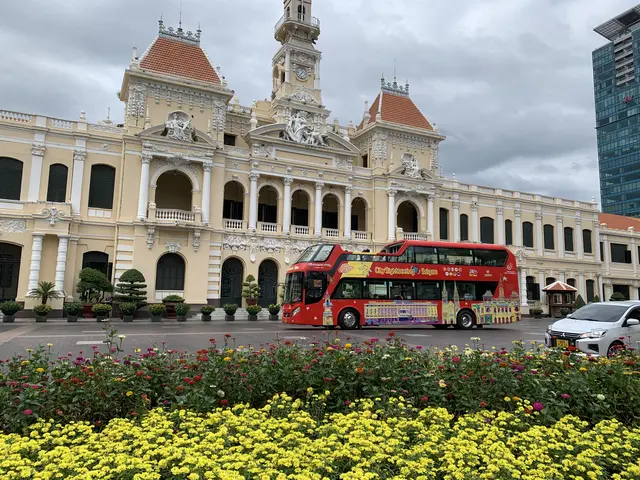
Saigon City Hall
I traveled to Vietnam from 11/26/2024 until 12/18/2024. I have considered visiting Vietnam for many years, but always found reasons not to go (3 weeks too long to be away from work, long flight, etc) despite my Traveling Companion’s (TC) urging.
My TC had a break from work in November and December, and asked if I wanted to go to Vietnam. Now that I’m retired and not getting any younger, no more excuses!
This is the first of several posts about my three+ week trip. This post provides an overview of my trip and discusses the logistics of travel in Vietnam. Hopefully you will find this info useful if you are pondering a trip to Vietnam.
I plan followup posts on each city that I visited.
Where I visited
I spent four nights in each of the following cities:
Saigon / Ho Chi Minh City District 1
Saigon was the capital of French Indochina, and then of South Vietnam. After the war, it was renamed Ho Chi Minh City. It is the largest city in Vietnam, with a population over 10 million.
District 1 is the center and heart of Saigon – the center of a frantic, bustling, rapidly modernizing city. We stayed at the Caravelle Saigon, which is a historic (but modern) hotel centrally located next to the historic Saigon Opera House (which was built by the French). Ben Thanh market, the Saigon river, the newly opened subway (which opened a few days after we left), Reunification Palace, Notre Dame Cathedral, and Saigon Center mall are all within a fifteen minute walk of the hotel.
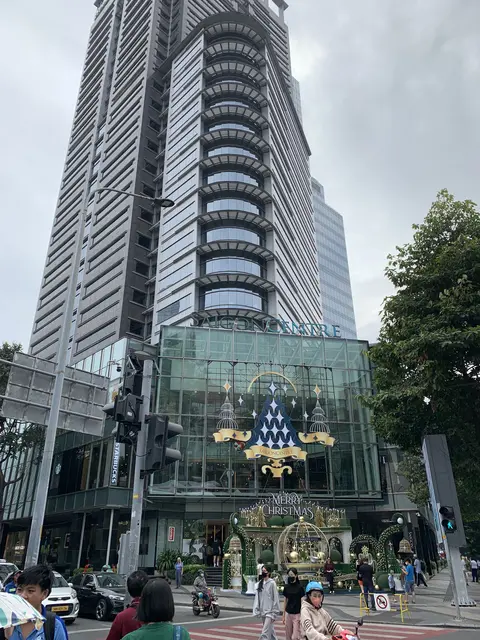
Saigon Center Shopping Mall -- Merry Christmas!
We stayed in District 1 over the US Thanksgiving holiday. The Caravelle served a special Thanksgiving dinner (which we skipped and instead attended mass at Notre Dame Cathedral). Saigon Center mall had Black Friday sales. Was I really almost 9000 miles from home?
Hoi An
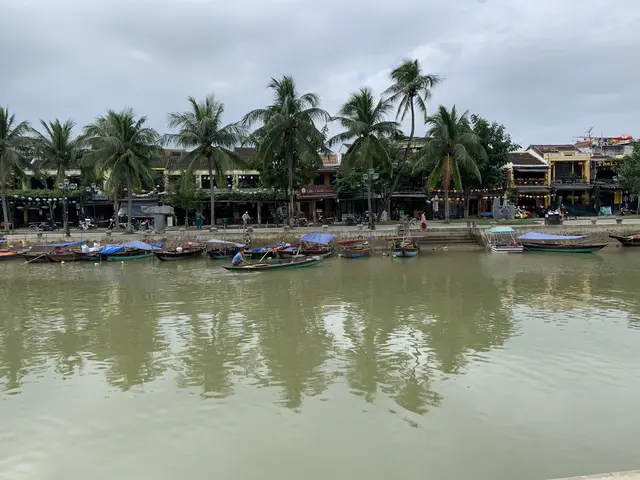
Hoi An River
Hoi An is a historic city in central Vietnam, on the South China Sea a few miles south of Da Nang. Its historic city center fills with colorful lanterns and boats at night.
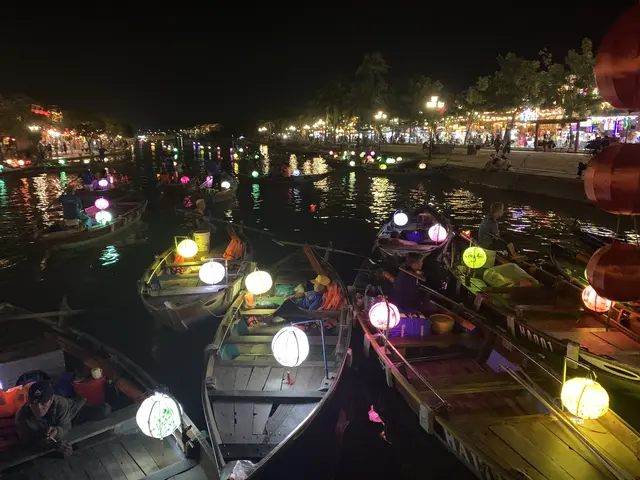
Hoi An River at Night
We stayed at the Bay Resort, a short walk across a narrow bridge from the old town. This hotel morphed into an IHG Moire hotel during our stay.
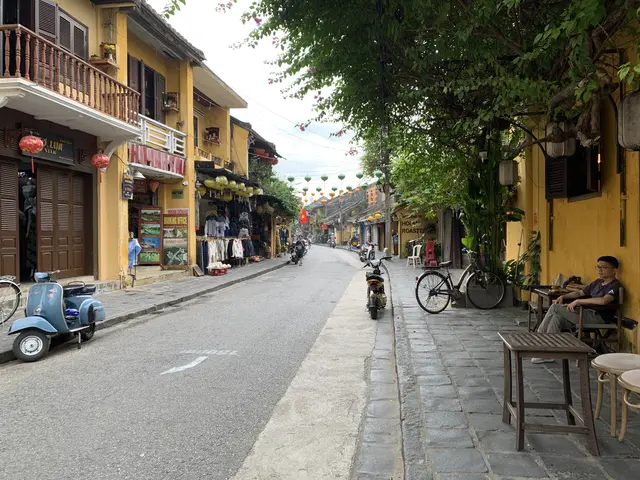
Quiet Street in Hoi An
I loved Hoi An, as it was less crowded than Saigon, better air quality, people very friendly, and had great food. Also the most walkable city we visited (more on walking in Vietnam below).
Da Nang
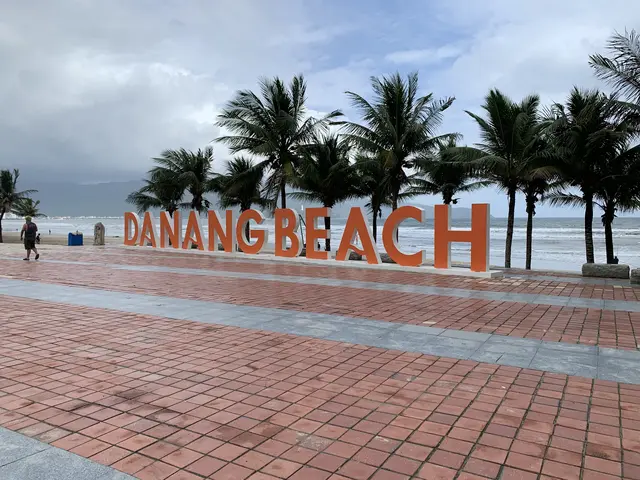
Danang Beach
Da Nang is a long thin city just north of Hoi An on the South China Sea. It has several miles of beach, with a picturesque peninsula with a Lady Buddha to the north of the city. It reminded me of Waikiki – a big city by a beautiful beach. Except that strangely, Da Nang’s beach was crowded at 6 AM but was otherwise empty.
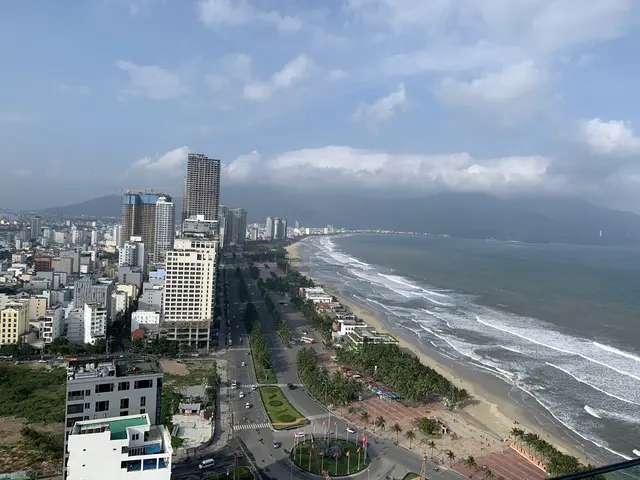
Danang Beach from Sala Hotel
We stayed in the Sala Danang Beach Hotel, very close to the beach (a short walk past three massage parlors).
Da Nang is popular with tourists and ex-pats. The weather is more pleasant than Saigon as is the air quality, and nature is nearby.
Da Lat
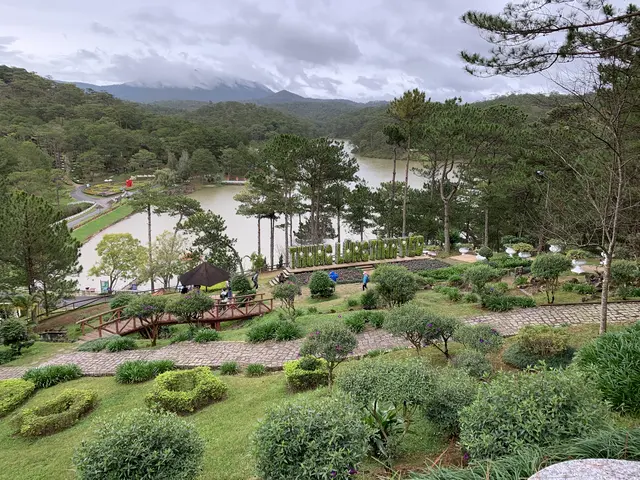
Valley of Love in Da Lat
Da Lat is in the mountainous portion of Vietnam (apparently 75% of the country is mountainous), north of Saigon. The weather is cool by Vietnamese standards – in the upper 60s F while we were there. Da Lat is the city of flowers, and outside the city are many greenhouses where fruits and vegetables are grown. Because of the city’s eternal spring, Da Lat is a vacation and honeymoon spot for Vietnamese.

Honeymoon Photo Op in Dalat
We stayed at the Royal Palace hotel in Da Lat, and our room literally was palatial. We had a sitting room, bedroom, large restroom with tub and shower, and a walk-in closet. This was the most expensive hotel in Da Lat, but was priced like a low-end Hyatt in the US.
Saigon District 3
Saigon’s District 3 is just north of district 1, close to Tan Son Nhat airport. It is located within walking distance of the area where my TC grew up. We saw the house where she lived with her family (which grew from one story when she lived there to three stories today). We attended mass at the parish church where she was confirmed.
District 3 also showed me the non-touristy side of Saigon. It was still bustling with people, but had a more “lived in” feel. For instance, I enjoyed visiting the Tan Dinh market where locals shopped for food (the famous Ben Thanh market in district 1 seemed to be more for tourists than locals).
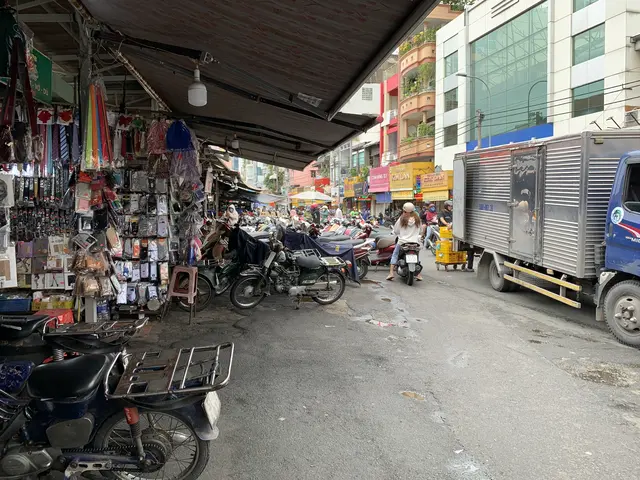
Tan Dinh Market in Saigon District 3
We stayed at La Vela Hotel, located at a major road crossing. The hotel was very nice with a spectacular view from the rooftop pool.
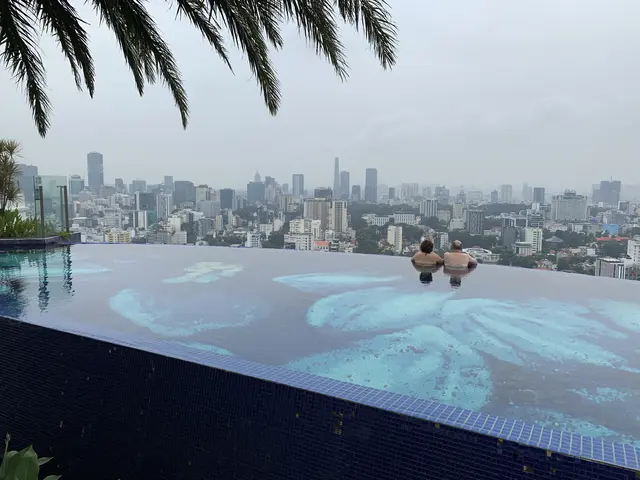
La Vela Rooftop Infinity Pool
Getting there
There are no direct flights from the US East Coast to Vietnam. But there are a multitude of one- or two-stop options. In fact, Vietnam is so far away that there are comparable options for flying east through Turkey or the Middle East, or flying west through Japan, Korea or Taiwan. These options all take roughly twenty hours of flying time.
The least expensive option was flying Turkish Airlines with a 13 hour layover in Istanbul. It was tempting to stay in Istanbul for several days (I have never been there), then fly to Vietnam. But I decided to maximize the time spent in Vietnam for this trip. And, Turkey lives in a bad neighborhood, with war in Syria (since ended?), Israel and Iran lobbing missiles at each other, etc.
I decided to take United from my home airport, to Newark, then from Newark to Japan’s Haneda airport, then ANA from Haneda to Saigon. On the way home, went from Saigon to Seoul’s Incheon airport, then to San Francisco, then to my home airport on the US east coast.
Flights were pricey and I booked only a month before departure, so I decided to book using my stash of United points (transferring a small amount from Chase as I needed just a few extra points to fully pay for the flight). So our flights were free.
Flying to Vietnam seemed endless. In the future, I will try to book a one-stop flight rather than a two-stop flight. Alternately, I’ll stay over in Japan or South Korea as I’d like to visit both.
On the way back, United offered me inexpensive upgrades for the flight across the Pacific as well as the flight across the US. I accepted these offers with no regrets, as they made the flight home much more comfortable. From Incheon to San Francisco, we flew in United’s Premier Plus seating, which was much more spacious than economy, and had better food. From San Francisco to my home airport, we flew in First Class which ironically was not as nice as Premier Plus (but was way better than economy).
Immigration
Vietnam requires US citizens to have a visa to enter Vietnam. My TC and I applied for a multiple entry visa through a local Vietnamese travel agent. After providing the agent with the required information and fee ($90/person), we received our visa a few days later – safely secured in a ziploc bag.
Where to stay
Vietnamese hotel prices range from inexpensive to moderate, compared to US standards. I paid for five star hotels as this was my first trip to Vietnam, and enjoyed the luxury as I would be too cheap to stay in comparable hotels in the US or Europe.
All hotels served free buffet breakfasts that were extravagent by US hotel standards. We often skipped lunch or ate a lunch of small street food (Banh Bao or Banh Gio) after having a large breakfast.
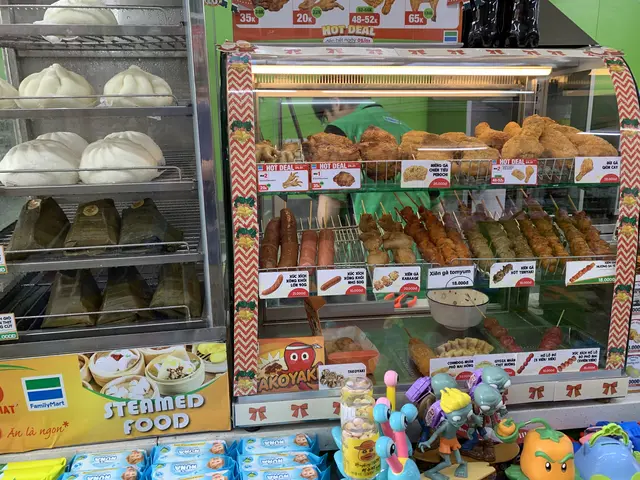
Convenience Store Lunch
I picked hotels with central locations with the intention of walking around the city (see comments on walking in Vietnam below).
Money
Vietnamese money is called “Dong”. During our vist in late 2024, 1 USD was equivalent to around 25,300 Dong (VND). Many stores in Vietnam, listed prices in thousands of Dong (for instance, if the price was “25” that meant 25,000 VND). Other stores printed the thousands very small to avoid confusion (as many stores in the US do with cents).
As a retired engineer who grew up just as handheld calculators were becoming widely available, I am trained to do “engineering approximations” in my head. Here is how I converted from Dong to USD quickly:
Conversion Method 1
- Divide by 100,000, throwing away the lower five digits.
- Multiply by 4.
For instance, 100,000 VND is:
- Divide by 100,000, so 100,000 -> 1
- Multiply by 4 -> $4 USD
1,000,000 VND is:
- Divide by 100,000 so 1,000,000 -> 10
- Multiply by 4 -> $40 USD
87,000 VND is:
- Divide by 100,000 so 87,000 -> 0.8 (throw away the 7 – this is an approximation)
- Multiply by 4 -> $3.20 USD
Conversion Method 2
Memorize the following key conversions, and “figure it out” from there:
- 25,000 VND -> 1 USD
- 100,000 VND -> 4 USD
- 500,000 VND -> 20 USD
- 1,000,000 VND -> 40 USD
OK, I’m dong playing with math!!
Credit cards / ATMs / Apple Pay / US cash
Many (but not all) restaurants accepted US Visa cards (I didn’t try other credit cards). If the restaurant bills Visa in Dong, then the bank issuing the Visa card will convert to dollars. Typically restaurants billed us in Dong not in Dollars. Be sure to use a Visa card with no foreign transaction fees (I used my Chase Sapphire Reserve throughout Vietnam).
Many restaurants and stores accept wireless payments. I tried Apple Pay at these locations, and it worked every time.
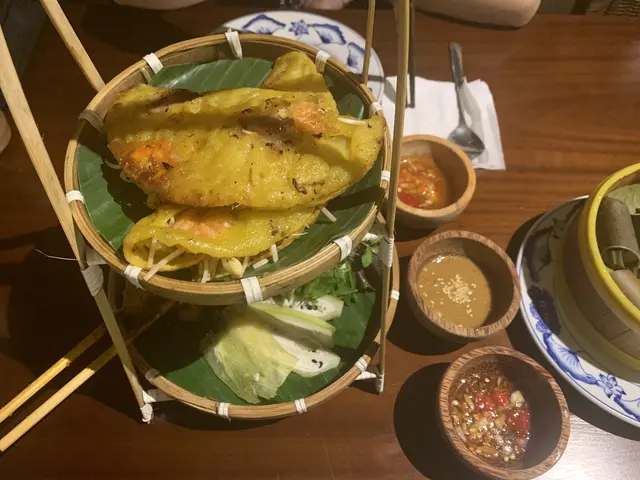
Vietnamese Pancakes in Hoi An
I used a Fidelity Visa Debit card at an ATM in Vietnam, and it worked without problem. However, withdrawals were limited to 2,000,000 VND ($80 USD), and the ATM charged a $2 fee.
Money exchange stores are located in airports, and we used one at Saigon Center mall. They converted US dollars to Dong. Note that they gave a good exchange rate for $100 bills, but a lesser exchange rate for smaller denominations.
Many people (street vendors, taxi drivers, shop owners) are happy to accept payment in USD. Ask before assuming that they do.
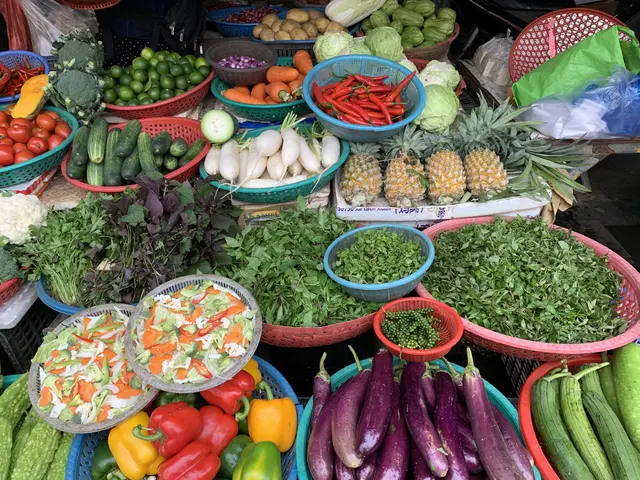
Food Stall in Market
Electricity
Electricity in Vietnam is 240V, 50Hz, same as in Europe. Every electrical outlet I encountered (in hotels) had plugs that accepted both US-style dual flat prongs as well as European-style dual rounded prongs.
Chargers for phones, iPads and other electronics typically work with both 120V and 240V electrical standards (read the fine print on the charger to be sure before plugging it in!). Hair dryers, alarm clocks, and other items probably will require a converter unless they were specifically designed to work with 240V.
Warning: if you plug something designed for only 120V into a 240V outlet, it will break! And may smoke while doing so!
Getting around
Within a city
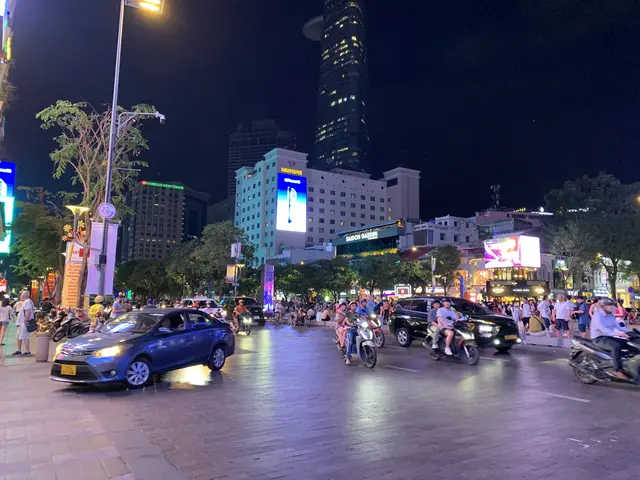
Traffic in Ho Chi Min City
In my opinion, Vietnam is not pedestrian-friendly. Sidewalks in Vietnam are a hotbed of activiy, filled with people, scooters (both parked and moving), street vendors, and other obstacles. Constant vigilence is required when walking. Most intersections do not have traffic lights, and there are no stop signs in Vietnam. Traffic flows continuously without natural breaks where you can cross the street. Cars move slowly and tend to follow traffic laws. Scooters do whatever they want – they drive on side walks, they make “right turns on red” without slowing down, they drive crosswise through traffic, they carry cargo.
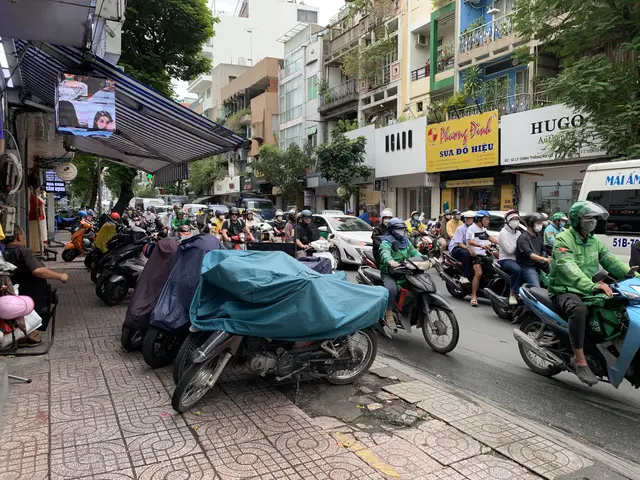
Saigon Traffic
Here is my dramatization of walking down a typical Vietnamese street: I stare down at the sidewalk while walking, as the sidewalk has large cracks and holes, and I don’t want to trip. I dodge a pile of garbage. The edge of the sidewalk drops off by a foot or more, designed to deal with torrential rains during the rainy season. The sidewalk ahead is filled with parked scooters – I have no choice but to walk in the street. As soon as I step into the street, ten scooters honk at me. I get back to the sidewalk as quickly as I can. Walking fifteen more feet, I am again forced into the road as a street vendor has set up shop filling the entire sidewalk. More honking. Someone kneeling on the sidewalk wants to fix my sneakers (what is wrong with them I wonder??). My TC grabs my hand and vigorously pulls me away from the sneaker-fixer. Vendors are yelling at me to check out their wares. The pollution from all the scooters is making breathing hard; I hope I don’t pass out. Watch out!! Here comes a scooter driving down the sidewalk in the opposite direction of traffic! Jump out of the way! I get to the intersection and need to cross the street. Traffic never stops. I step into the street – honk, honk! I thread my way through the traffic, with drivers weaving around me on all sides. Miraculously, I arrive at the other side of the road. There is foot-high obstacle built into the sidewalk – don’t trip over it! What is it for?? Ahh – it is to keep scooters from driving on that section of sidewalk, and provides a blissful break. Too quickly that section of sidewalk ends and I’m back to the chaos.
Note that even in Hoi An, the most walkable place we visited, we still had to cross a narrow bridge (sidewalk was approximately 1 foot wide – mercifully too narrow for scooters or vendors). The bridge had cars and scooters whizzing by as I navigated the sidewalk. Even in the outdoor market in Hoi An, scooters drivers would roar right through the pedestrian areas in the market.
Note that while walking the streets of Vietnam, I saw no homeless people and very few panhandlers.
If you are young and fearless, have fun walking in Vietnam!! If you are retired and each additional day of life is precious, there is a better way…
Vietnam has a ride-share service called “Grab” (there are several other ride-share services, but I used only Grab). It is very similar to Uber. You call either a car or a scooter driver using the Grab app on your phone, and are shown a map so you can watch the driver come to your location. You pay for the ride and tip using the Grab app. Rides were very inexpensive (short rides $2 USD, longer rides less than $5 USD). The app’s maximum allowed tip is $4 USD.
We took Grab many places in Vietnam (to restaurants, to attractions, to/from airport) with no problem at all. Note however that, especially at airports, there will be drivers who claim to be from Grab but want you to pay them directly rather than through the app. I typically did not want to do this as I wanted to preserve my always dwindling supply of Dong, so preferred to pay with the Grab app. You can save money if you hire those drivers, but I think the risk is greater.
Most Grab drivers who picked us up at airports offered to drive us around the town and show us attractions for a fixed price. They gave us their contact info (typically via WhatsApp). We did this in Da Lat, which I will describe in a separate post about our time in Da Lat.
Between cities
Vietnam does not have an Interstate highway system like in the US. Building one would be very expensive due to the mountains. As a result, traveling between cities by car / bus is possible but slow.
We used Vietnam Airlines to fly from:
- Saigon to Da Nang (Hoi An)
- Da Nang to Da Lat
- Da Lat to Saigon
Our domestic flights inside Vietnam were all less than an hour of flight-time, and Vietnam Airlines seemed reliable and professional.
Communication
Internet
All hotels we stayed in had high speed WiFi. I used Mullvad VPN with no issues (I also use Mullvad when at home in the US – the VPN basically hides my internet traffic from my ISP).
Cell Phone
I use Google Fi on my iPhone. This worked well in Vietnam for both data and voice.
To place a voice call from my US iPhone physically located in Vietnam to a Vietnamese phone number, dial: 011 84 vietnamese_phone_number 011 – Tells US iPhone you are making an International call 84 – Tells US iPhone you are calling a Vietnamese phone number vietnamese_phone_number – local number within Vietnam that you want to call
English
Everyone at hotel front desks spoke excellent English. That said, we stayed at hotels focused on international travelers so I suspect excellent English is a requirement for working at the front desk.
Some Grab drivers spoke English well, others had workarounds. For instance, one driver typed text into Google Translate on their phone then showed to me. That quickly stopped when my TC responded in Vietnamese.
Waiters / Waitresses in hotel restaurants spoke English and could communicate about food-related issues (“Please bring me coffee”), but couldn’t chat about random topics (“Does it always rain this much in November?”).
Many restaurants had menus written in both Vietnamese and English. Many signs (including at airport, and subway, etc) were in both Vietnamese and English. Signs in tourist areas usually had English (for instance, the three massage parlors near our Da Nang hotel all had “Massage” written in large letters on the front). Signs telling you to not do something were often written exclusively in English (Do not touch! Do not feed the monkeys!). Implying that English-speakers are the ones who typically misbehave (go figure ;))
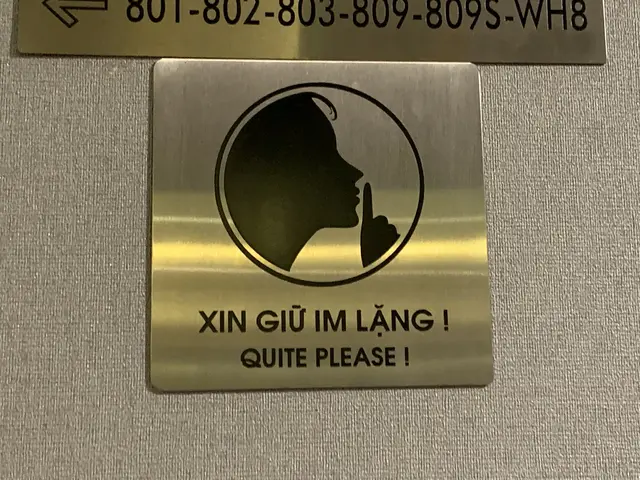
I think they mean 'Quiet Please'
Almost all the signs in Saigon Center mall were in English. Many advertised Black Friday sales. I felt like I was in the US when visiting that mall.
My TC speaks perfect Vietnamese, so I left complex conversations to my TC.
Could I have managed in Vietnam without my TC, a native Vietnamese speaker? Yes, but I think we received more “insider information” because my TC spoke Vietnamese (for instance, people would tell where to go and not go, which I suspect they would not do if speaking English to tourists).
Weather
I visited Vietnam in November/December. During this visit, the weather generally was:
- Saigon: Upper 80s and extremely humid. Sun was intense, but was cloudy 90% of the time. Air also very hazy due to pollution.
- Hoi An / Da Nang: Lower 80s, less humidity. Occasional rain, mostly cloudy. We got drenched while taking a boat ride in the famous “Coconut Forest”.
- Da Lat: 60s, cool, dreary. Rained every day during our visit.
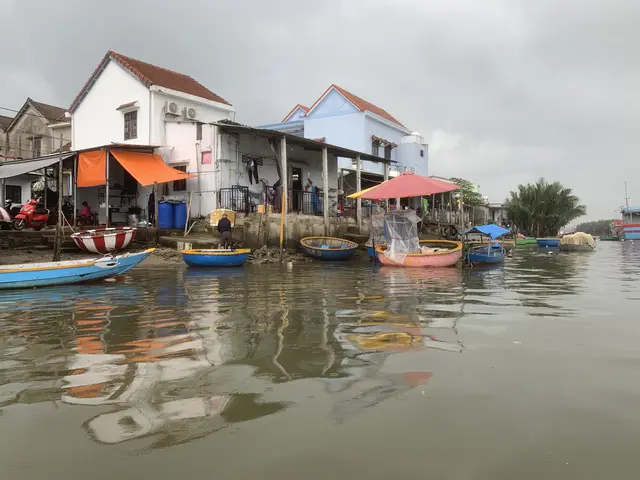
Hoi An Coconut Forest
Vietnam has two seasons – dry and rainy. Sure seemed to me like we visited during the rainy season. But honestly, I would visit again during this time as I prefer cloudy weather to intense sun, and can deal with the rain when it happens.
Even in Saigon, locals often wore jackets. Street vendors who worked outside all day wore jackets, even though temps were in the upper 80s and very humid. Perhaps the weather was cool by Vietnamese standards during my visit?
Saigon was noticeably polluted, in my opinion. When flying into the city, you could see the orange haze in the air. I could smell/taste the pollution when walking on the streets. This was true both in District 1 and in District 3 (which are both in the center of the city). In the other cities we visited, pollution was not noticeable.
Air Conditioning
Modern buildings in Vietnam have air conditioning. All the Grab cars we took had air conditioning. Hotels all had air conditioning. Note however that the air conditioning was “European-style” (meaning lightly air conditioned) versus “US-style” (meaning a freezing arctic refuge from the outdoor heat). Most restaurants had fans rather than air conditioning.
People
I found the people in Vietnam to be very friendly, especially outside of Saigon. They were eager to chat, especially in Vietnamese to my TC.
Would I visit again?
Definitely! This trip was designed to cover central and southern Vietnam at a leisurely pace (I am retired and not in a hurry). My next visit will cover northern Vietnam, especially Ha Long Bay, Hanoi, Ninh Binh and Sapa. Maybe next fall / winter?